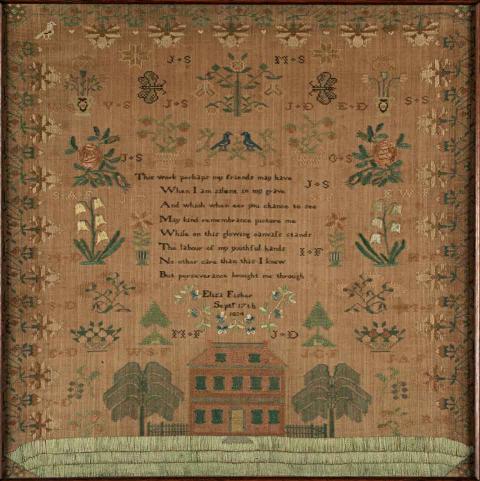Between the Lines: Innovation and Expression in Women’s Sewing Samplers
Part 1: April 15–June 18
Part 2: June 24–September 3
Spotlight Gallery

From the Latin “exemplum,” samplers were developed by embroiderers and lace makers as a way to record designs, stitches, and effects. By the eighteenth century, nearly every middle- and upper-class girl in the Western world produced at least two samplers as part of her formal education. The colorful and intricate objects displayed a woman’s skills in needlework and demonstrated her literacy. Traditionally, these objects have been marginalized as “women’s work” and dismissed as formulaic and imitative. This exhibition showcases select samplers from the Loeb’s collection to explore how women makers used the sampler medium as a site of personal expression and aesthetic innovation. Objects from Mexico, the United States, England, and Holland show how the sampler was a truly global art form during the eighteenth and nineteenth centuries. Select loans from the Locust Grove Estate elucidate the complex mathematical formulas and intense planning required to ensure a successful overall design. The exhibition was organized by the Loeb and Caroline Culp, Adjunct Assistant Professor of Art History, with the assistance of Ida-Rose Chabon ’24. Support for In the Spotlight is provided by Mary Ellen Weisl Rudolph ’61, P ’98 and James N. Rudolph P ’98.
